Ripley Entertainment Inc.'s Blog, page 157
March 4, 2021
The Iron Maiden: Torture Device Or Sin-Cleanser?
Featured in Ripley's Believe It or Not!

The Early Middle Ages had been dubbed the Dark Ages—unfairly considered nothing more than just that: a barbarous period of fascinating and terrifying relics like the schand flöte (Shame Flute). Due to the presumed lack of cultural advancement prior to the dawn of the Renaissance, many historians argue that this doom and gloom nickname is an inaccurate description of an era that was, in fact, an intriguing, vibrant time, marked by great social and economic change.
However, knowing what curious contraptions came out of the Dark Ages, we at Ripley’s believe the name is quite fitting… Cue the dreaded Iron Maiden.
The Iron Maiden of NurembergThroughout history, there have been contradictory accounts of this grim, vertical-standing coffin laced with spikes and similar methods of torture. The most famous Iron Maiden legend is that of the iconic Iron Maiden of Nuremberg, which alleges it was built at the turn of the 19th century and was later shattered by bombing raids at the close of World War II.
The history of the Iron Maiden of Nuremberg is almost impossible to verify (as is the case with the alleged Medieval use of Iron Maidens in general), but this infamous instance of the device certainly provides a grim and fascinating tale to tell.
Initially known as the ‘Nuremberg Virgin,’ legend has it that this device was adorned with a bust of the Virgin Mary and utilized against non-believers. The Inquisition, it’s said, employed it against their victims, using a Nuremberg-constructed Maiden designed specifically not to instantly kill, but to prolong pain as much as possible. Its blades were long and vicious but carefully placed so as not to cause fatal damage to the body… at first.
With the Iron Maiden, it’s not simply about the puncture wounds or the repeated opening and closing of the doors, but the isolation, darkness, and silence in between.
The Iron Virgin, for all its cruelty and horror, may not have simply been intended as a plaything for the sadistic. As far as the Inquisition was concerned, physical pain in this world was liberating and sin-cleansing. The sufferer was, perhaps, absolved of their sins by this terrible treatment.
The Timing and Truth to TortureHowever, as previously mentioned, the Iron Maiden of Nuremberg was said to have been constructed in the year 1800, placing it firmly out of the era of the Reformation. By this time, tourists with an interest in the macabre had to be catered to, and grim tales of such devices could be very lucrative. An Iron Maiden with the face of the Virgin Mary was a real showstopper as a Medieval torture device, even if it may have actually been (as has been reported) a simple exaggeration of the Schandmantel, or shame cloak—a barrel of sorts that unseemly members of society were forced to wear as a sort of mobile stocks!
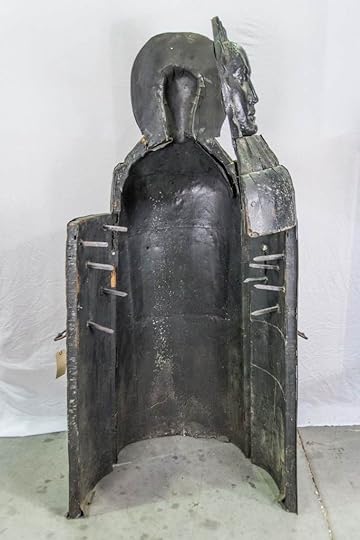
Medieval Iron Maiden from the Ripley’s Exhibit Collection
Some of the Iron Maiden’s notoriety in popular culture can be attributed to Johann Phillipp Siebenkees, a historian of the eighteenth century who wrote a dubious and dramatic account of the execution of a forger of coins in the sixteenth century. Whether the Maiden had existed and been in use prior to this—either the Iron Maiden of Nuremberg itself, or a device of the same name—is up for debate, but versions of the machine began to be created by those of a vicious disposition. With that, it cemented its place in the public consciousness.
The Inspiration for the Maiden: The Apega Of NabisThe earliest mention of a device akin to the Iron Maiden can perhaps be attributed to Polybius. He wrote of the Apega of Nabis, which was designed by the cruel tyrant Nabis. He assumed rule of Lacedaemon after Machanidas’ death in 207 BC and set about consolidating his iron grasp of the Ancient Greek city-state in the cruelest ways possible.
Nabis is said to have wrested every ounce of wealth from his people that he possibly could, torturing those who did not yield to him in the most horrific ways. His wife, Apega, was the inspiration for the most grimly creative of these methods: the Apega of Nabis, a figure of a woman studded with vicious spikes on its arms and chest. Intoxicated victims were said to have been placed in a room with the ghastly statue, and on touching it, would be pierced by its many sharp spikes.
The Apega of Nabis or Iron Apega was said to have been a fitting ‘homage’ to a woman as vicious, greedy, and bloodthirsty as her husband, but it was also a fascinating creation. An elaborate system of switches is reported to have allowed Nabis to operate this sophisticated contraption, personally…
The Monstrous Brazen BullAnother example is the monstrous Brazen Bull. This story dates even further back to Phalaris and his rule of Akragas (now Sicily). Every bit as vicious a ruler as Nabis, Phalaris was delighted when his sculptor Perilaus presented his latest work: a brass statue of a bull, featuring a complex system of piping and room for an adult human to fit inside.
It’s reported that Phalaris delighted in trapping those who displeased him inside the device, steadily heating it over a fire until they perished in agony. The anguished howls of victims were converted to bull-like roars by the pipes…

Perillos being forced into the brazen bull that he built for Phalaris.
Both the Apega of Nabis and the Brazen Bull make for grim, fascinating tales, but the question is: were they real, physical devices that were actually used? There are accounts that Phalaris perished in his own Brazen Bull after Telemachus seized power, but Ancient Greek historians are also known to have told implausible or inaccurate stories of certain events. Were these hideous machines allegorical of the cruelty and greed of their ‘owners?’ It’s tough to know for sure, and the same is true of the Iron Maiden.
Whether the Iron Maiden of Nuremberg was really used or not is impossible to say, but the strength of the legend around it speaks for itself.
Finding A Home In The Ripley’s CollectionBelieve It or Not!, Robert Ripley acquired the Iron Maiden of Nuremberg during one of his travels to Germany. He’s said to have carried the eight-foot-tall device all the way home to join his growing collection of exhibits. Shaped like a coffin and lined with 13 sharp iron spikes, this piece continues to have a home in the Ripley’s collection today!
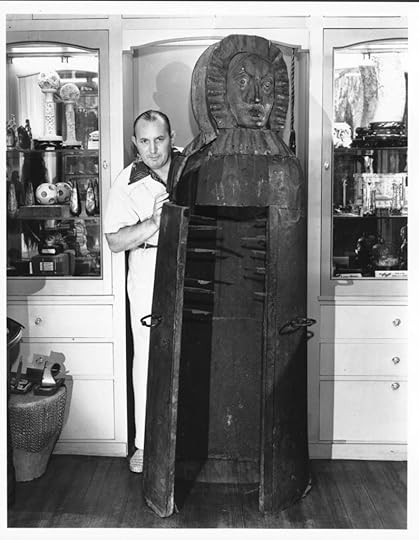
Robert Ripley once carried this authentic medieval torture device home from Nuremberg, Germany. Eight feet tall, it is shaped like a coffin and lined with 13 sharp iron spikes, designed to pierce the eyes, throat, and heart of prisoners. || Photo via Ripley Entertainment Archives
By Chris Littlechild, contributor for Ripleys.com
THE STRANGEST STORIES OF THE YEAR Now that you’ve read the strangest stories of the week, how about the strangest stories of the year? Ripley’s all-new annual is an all-true collection of incredible facts, unexpected stories, and stunning photography!CARTOON 03-04-2021
March 3, 2021
The Fascinating (And Sometimes Bloody) History Of Roller Coasters
Featured in Ripley's Believe It or Not!

Roller coasters have never been bigger, faster, and fiercer than they are today, but for thrill-seekers, they’ve been offering the ultimate rush for over 200 years.
It’s a Slippery SlopeThere’s a reason so many languages refer to roller coasters as “Russian mountains.” From Paris’ Les Montagnes Russes to Spain’s montañas rusas to Italy’s montagne russe, some countries have picked up on roller coasters’ unlikely origins.
The earliest forms of roller coasters were constructed completely of ice in 17th-century Russia and known simply as “sliding mountains.” The first carts were made of hollowed-out blocks of ice pushed down icy, zippy hills. Popular among the rich and royal, the slides evolved into using timber chutes, standing at about 20-plus-meters tall, packed with ice to maximize speed. Drawings from the time depict these slides to be a little, well, unstable, with people often “flying” off the hills.
It is very possible we owe the invention of the wheeled coaster to Catherine the Great, the Russian empress who’s also responsible for less-fun things such as overthrowing and possibly killing her husband so she could rule in his place.
Anyway, in 1784, she decided she needed a summer version of the icy coasters built in the gardens of the Oranienbaum Palace near St. Petersburg. So the first wooden coaster, complete with grooved tracks and wooden carts with wheels, was born. Catherine kept things classy by adding a tea pavilion next to her coaster so she could entertain the ladies of the court after some zipping fun.
Crossing BordersThe how and when roller coasters made the jump to other countries is still uncertain. Some believe Russian soldiers might have brought the concept to France after the defeat of Napoleon, but by 1817, the Parc Beaujon amusement park had opened on the Champs Elysees.
One of its prominent features was the Aerial Walks, a sort of sliding rail where riders descended a curving track on three-wheel carts. The same year, the French also opened Belleville Mountain, the first coaster with cars that locked into the tracks.
Crossing the OceanRoller coasters didn’t make it to the U.S. until half a century later. Pennsylvania’s Mauch Chunk Switchback Railroad was possibly the first one of sorts. While the Mauch Chunk train was originally used to haul coal down a steep hill, it soon became obvious people were intrigued by it. By 1844, the railroad was offering passenger rides down the mountain at hair-raising speeds of up to 50 miles per hour.
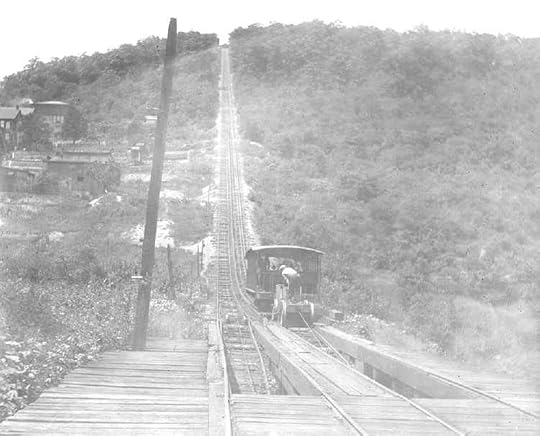
Mount Pisgah with the Mauch Chunk Switchback Railway
Then in 1884, magic happened–America’s first proper roller coaster opened at Coney Island. Though inspired by the Mauch Chunk Railroad, the coaster traveled at just six miles per hour down a 600-foot-long one-way track. The ride cost only one nickel, but it was so popular that it earned its designer, LaMarcus Adna Thompson, a whopping $600 a day.
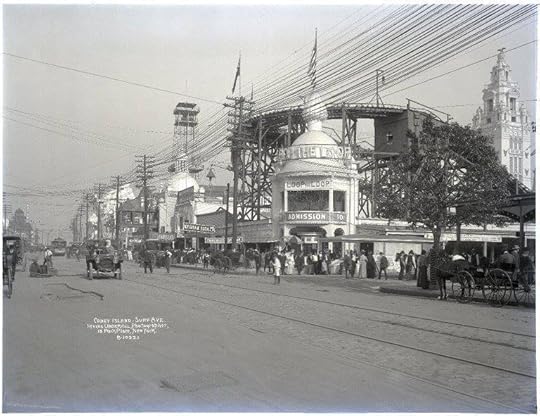
Loop the Loop, an early looping roller coaster at Coney Island, 1906
Less than a year later, oval complete-circuit rides became the norm, and by 1886, the first coaster dark tunnels with painted scenery were already making an appearance.
Early TragediesUnsurprisingly, Coney Island is also where the first major roller coaster accident was recorded.
By the early 1900s, roller coasters were in the midst of their golden age, with over 2000 sprouting all over the country. Coney Island’s Rough Riders coaster—which had a driver and an electric motor—was a very popular attraction until the fateful 1915 summer day in which the accident occurred.
The accident, which happened when the cart took a turn at a very high speed, made the headlines. The New York Times reported: “Rough Rider car upsets 30 feet in air, hurling three persons into street crowd.” Of the six people in the cart, three died and one was injured. A woman and her four-year-old son survived by holding on to the wrecked car’s handrail.
Then, there was the Derby Racer coaster at Revere Beach, Massachusetts, which between 1911 and 1936 accumulated the most abysmal safety record in the history of roller coasters. After two passengers, including the company’s treasurer, lost their lives on the Derby Racer, the company installed safety restraints in the passenger cars. Though, this didn’t seem to help much, as passengers kept falling off in 1917, 1923, and 1929. The coaster finally closed in 1936.
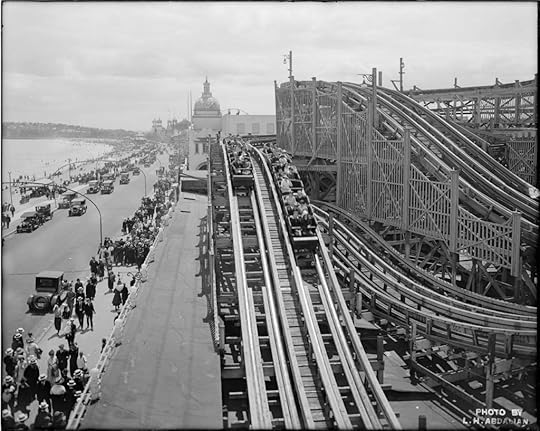
The “Derby Racer” at Revere Beach in Massachusetts
Modern TimesWhen Disneyland’s Matterhorn Bobsleds opened in 1959, they became the first steel coasters in the world to have a tubular track. But other coasters were already using steel even before then—The Little Dipper in Memphis Kiddie Parks, Ohio, has been continuously operating since 1952.

Disneyland’s Matterhorn Bobsleds || Photo: Elf via Wikimedia Commons
By the 1970s, roller coasters were introducing inversions, vertical loops, interlocking loops, and underwater tunnels. In 1979, the wooden roller coaster The Beast opened at Kings Island amusement park in Ohio. With a 7,359 foot-long track, it still remains the world’s longest wooden roller coaster.
The 80s and 90s were decades of extremes: Japan opened Dangait: the world’s first coaster with stand-up trains. Australia built Tower of Terror II, the first coaster to reach a speed of 100 mph. And the U.S. launched Medusa: the first floorless coaster.
What’s next for roller coasters? Well, the sky is the limit for the ultimate scream machines. Literally.
By Diana Bocco, contributor for Ripleys.com
EXPLORE THE ODD IN PERSON! Discover hundreds of strange and unusual artifacts and get hands-on with unbelievable interactives when you visit a Ripley’s Odditorium!Source: The Fascinating (And Sometimes Bloody) History Of Roller Coasters
CARTOON 03-03-2021
March 2, 2021
CARTOON 03-02-2021
March 1, 2021
CARTOON 03-01-2021
February 28, 2021
CARTOON 02-28-2021
February 27, 2021
CARTOON 02-27-2021
February 26, 2021
Black-Footed Ferret Lives On Thanks To Cutie Clone
Featured in Ripley's Believe It or Not!

[February 22–February 28, 2021] A bathroom bear attack, cliff-diving coffins, and a secret message from space—all round-up in this week’s weird news from Ripley’s Believe It or Not!
Bathroom Break Turns into Bear AttackBraving the backcountry backfired on a woman in Alaska when she was attacked by a bear while using an outhouse!
Shannon Stevens was staying at her brother’s yurt in the Alaskan wilderness when she made her way to the resident outhouse. The experience quickly turned from relief to panic when a bear lunged up from below and bit her the backside before she even had a chance to sit down fully. She immediately jumped up, screamed, and got the heck out of there.
Hearing screams from the outhouse, Steven’s brother, Erik, rushed down to check on her, assuming a squirrel or a mink had bitten her. Instead, he found her tending to a bear bite, and the duo rushed back to the safety of the yurt.
When they emerged the next morning, there were bear tracks everywhere, including leading to the outhouse’s back door.

Hundreds of coffins crashed into the Ligurian Sea on Monday after a landslide on the Italian coast caused a cemetery to collapse.
An estimated 200 coffins plunged into the waters when the 100-year-old Camogli cemetery fell victim to a landslide after maintenance workers along the coastline discovered cracks in the rocks.
Only ten coffins have been recovered thus far, but local officials hope to find more in the upcoming days.
The cemetery, which rested on a rocky coastal cliff near Genoa, was closed on Saturday after workers noticed fissures nearby.
A team of geologists was called in to investigate the damage using drones to see if they can find other areas of concern, but the fragile nature of the shores will make it hard to determine.
The coastal area near the cemetery has been blocked to prevent the coffins from driving out to sea.
Perseverance the Key to Solving Rover’s Secret Code
Around 200 coffins have fallen into the Ligurian sea after parts of an Italian cemetery collapsed in a landslide. https://t.co/aO7G9hFUG4 pic.twitter.com/1bL5ix2iVc
— euronews (@euronews) February 24, 2021
It’s peak travel-season for Mars, as conditions this month have been perfect for exploration. But what’s the fun of sending a rover to space if you don’t throw in a secret message for the ride?
Detectives of the World Wide Web were quick to notice a secret code flashing from the parachute of NASA’s perseverance rover as it plummeted through the atmosphere of Mars on February 18.
Viewers couldn’t help but notice that the parachute’s flashing red-and-white stripes seemed to be telling us something. It took only six hours after NASA scientists confirmed that there was, in fact, a message in the patterns on Monday, for people to crack the code.

NASA Mars 2020 mission members hid a secret message in the parachute that landed Perseverance on the surface of Mars. (Image credit: NASA|JPL)
The binary computer code, created by the Perseverance’s chief engineer Adam Stelzner, spelled out: “Dare mighty things,” the same message used as the motto for NASA’s Jet Propulsion Laboratory.
Allen Chen, the Perseverance’s lead systems engineer, has also suggested that there are other secret messages ingrained in the rover’s coding, which “will never be known—even by me.”
Say “Yellow!” to this Rare Pigmented PenguinScientists are flipping out over the discovery of a yellow-pigmented penguin photographed on the shores of South Georgia Island.
Belgian photographer, Yves Adams, captured the shot of the yellow-tinged King penguin after landing on the beach during a two-month expedition back in December 2019. He waited to share the image with the world until earlier this month when he posted it on his Instagram.
View this post on Instagram
A post shared by Yves Adams (@yves_adams)
Since penguins are typically known for their black-and-white appearance, this brightly-hued bird stood out in the crowd, with Adams describing the scene as “chaos full of sea elephants and Antarctic fur seals, and thousands of other king penguins.”
For a penguin to have any kind of pigment anomaly is rare, but when they do, they’re typically all black, all white, or a mix of the two. Without physically studying this sunshiney specimen, scientists are left to speculate the cause of its unique appearance, with much discussion about whether what level of melanin deficit it exhibits.
While this penguin is pretty, there is concern that its coloring will ostracize it from its community, as penguins are relatively superficial creatures who choose mates based on appearance. Safety is another concern for this lone King since its coloring may not protect it from the sun and predators like standard penguin tuxedos do.
Black-Footed Ferret Lives on Thanks to Cutie CloneThough believed to have gone extinct as recently as the 1980s, the black-footed ferret lives to see another day through the first successful cloning of an endangered species in the United States—a little lady named Elizabeth Ann!
After being declared extinct in 1979, the black-footed ferret was put back on the endangered species list by 1981, when a small group was found taking up residence on a Wyoming farm. Environmentalists were quick to relocate the population for breeding, but only seven were able to reproduce. There are currently 650 living black-footed ferrets in the U.S., all descending from these special seven.
As the species’ lack of diversity continued to threaten their existence, scientists searched for alternative methods to regenerate the population, ultimately deciding that cloning was the way to go. Fortunately, the San Diego Zoo Global project anticipated this very event decades ago when they began collecting and freezing tissues from endangered species and ended up providing the tissue of a female named Willa for the project.
Cloning the female ferret was no easy feat, with researchers from the U.S. Fish and Wildlife Service, Pets & Equine, The Association of Zoos and Aquariums, San Diego Zoo Global, ViaGen, and Revive & Restore joining ranks to save the species.
Elizabeth Ann is the first of many planned clones that will be critical in building diversity in the black-footed ferret population. As for Willa, she may have died over 30-years-ago, but somewhere up in ferret heaven, she gets to celebrate potentially saving her entire species.
Additional footage of the lovely Elizabeth Anne.
pic.twitter.com/fz7HnwyI1F
— US Fish and Wildlife (@USFWSMtnPrairie) February 18, 2021
By Meghan Yani, contributor for Ripleys.com
EXPLORE THE ODD IN PERSON! Discover hundreds of strange and unusual artifacts and get hands-on with unbelievable interactives when you visit a Ripley’s Odditorium!CARTOON 02-26-2021
Ripley Entertainment Inc.'s Blog
- Ripley Entertainment Inc.'s profile
- 52 followers










